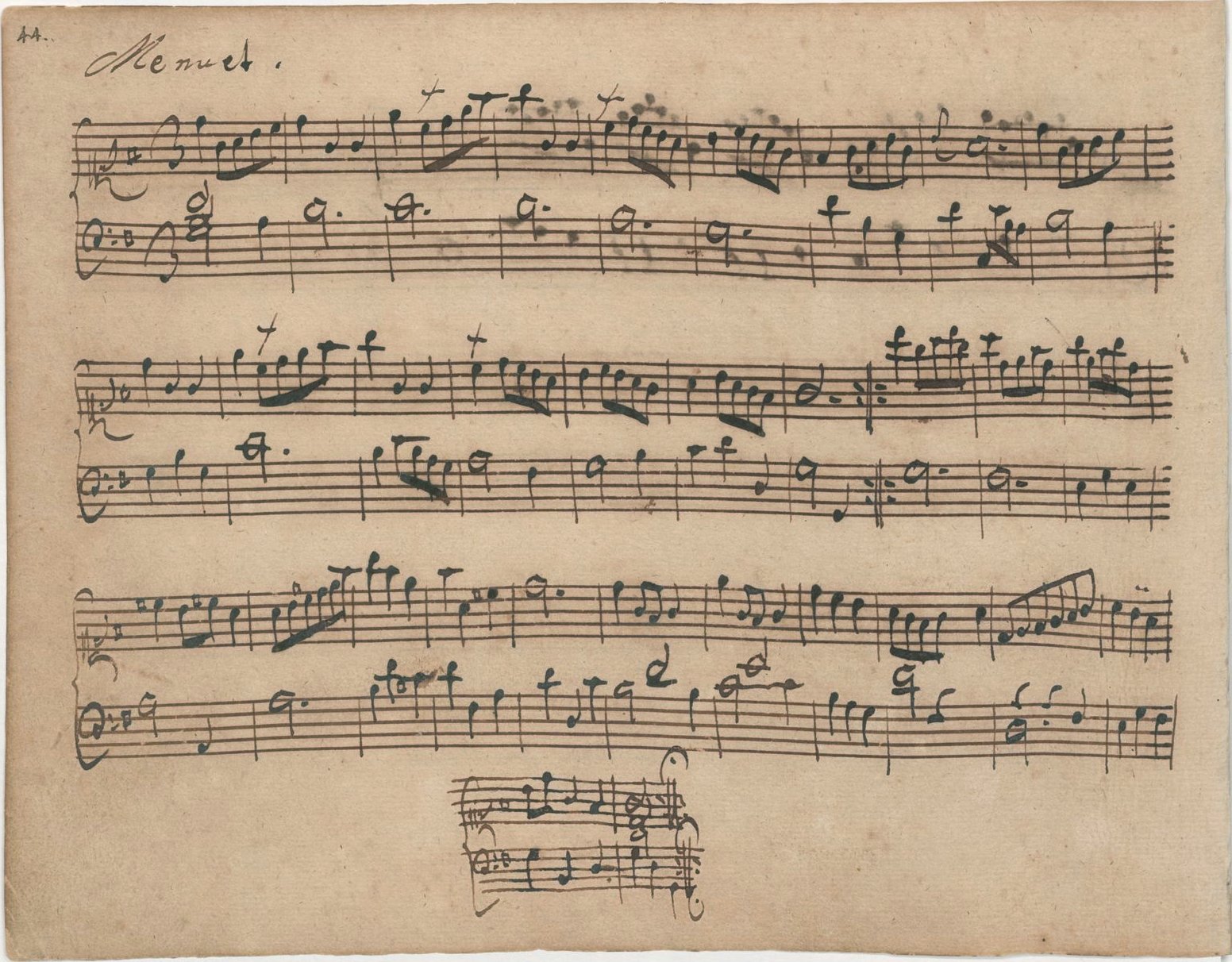Minuet in G Maj. Anh 114
Menuet [Minuet] in G Maj. BWV Anh. 114
Taken from Suite de Clavecin [Suite for Harpsichord] by Christian Petzold
Piano: Tullio Forlenza
You can purchase these recordings in CD quality (44.100 Hz 16 bit)
by logging in to the site and linking to the following page:
HISTORICAL NOTES
This piece is the 4th in the "Notenbüchlein für Anna Magdalena Bach" [Notebook for Anna Magdalena Bach]. Anna Magdalena Bach-Wilcke was the second wife of Johann Sebastian Bach. This notebook, which dates back to 1725, includes numerous compositions connected with members of the Bach family, Johann Sebastian and some of his sons, as well as many pieces by other authors.
For an extensive period of time, this Minuet had been attributed to Johann Sebastian Bach and this error stems from the BWV Anh. catalogue number. 114 which normally features the Bach compositions. The discovery of Christian Petzold's Suite manuscript has definitively decreed otherwise.
The Minuet in G Maj. is part of the "Suite de Clavecin" [Suite for Harpsichord] by Christian Petzold which was contained in a collection of manuscripts dating back to 1726 and lodged in the archives of the Weißenfels church in Germany. The original collection also included compositions by Johann Sebastian Bach, Johann Kuhnau, Georg Philipp Telemann and others, but for the moment it seems to have been lost. Fortunately, some of the sheets are currently found in the Staatliches Institut für Musikforschung - Preußischer Kulturbesitz [State Institute for Musical Research - Prussian Cultural Heritage] in Berlin, identified as Mus. ms. 30500, fol. 33v.-36r. [Musical manuscript 30500, sheets from 33 left to 36 right].
CHARACTERISTICS OF THE PIECE
The Minuet in G Maj. BWV Anh. 114 is an extremely simple piece of music divided into two parts of 16 measures each, both repeated. In the version contained in the "Notenbüchlein für Anna Magdalena Bach" [Notebook for Anna Magdalena Bach] the piece is completely independent and ends after the final refrain in the second part. Instead,in the Suite conceived by Petzold, the first Minuet is followed by a second one, BWV Anh. 115 in G Min. (also mistakenly attributed to J.S. Bach) which, upon its conclusion, calls for the complete repetition of the first Minuet, according to the typical scheme below:
| Minuetto I | Minuetto II | Minuetto I |
| AI, AII, BI, BII | AI, AII, BI, BII | AI, BI |
In the J.S. Bach version of the piece there are some minor differences when compared to the Petzold version: measure 7 contains a different note and there are often small embellishments distributed throughout the piece, but it is not known whether such differences were added by Johann Sebastian Bach or by his wife Anna Magdalena. Such embellishments, however, are often omitted, both to render the piece more uniform and because they are less effective when performed on a modern piano.
PERFORMANCE NOTES
The Minuet is a dance in three beats, at aslow or moderate tempo, whose character can range from fairly solemn and ceremonial to graceful and delicate. This expressive variability is due to the longevity of this dance, which appeared at the beginning of the XVII century and whose musical development continued until the XX, acquiring different characteristics over time.
In the case of this Minuet, composed between the Baroque era and the early 1700s I tried to highlight some of its delicately graceful elements, while respecting its sober seventeenth century context, whitout excessive ritardandos when either ending a phrase or in the small, indispensable hesitations that pertain to this dance and enable dancers to realise its typical movements.
It was very important to keep the sense of moderate ternary time constant, free of haste, a characteristic which is totally alien to this elegance dance.
Tullio Forlenza
(Trad.: Sara Rosenman)

